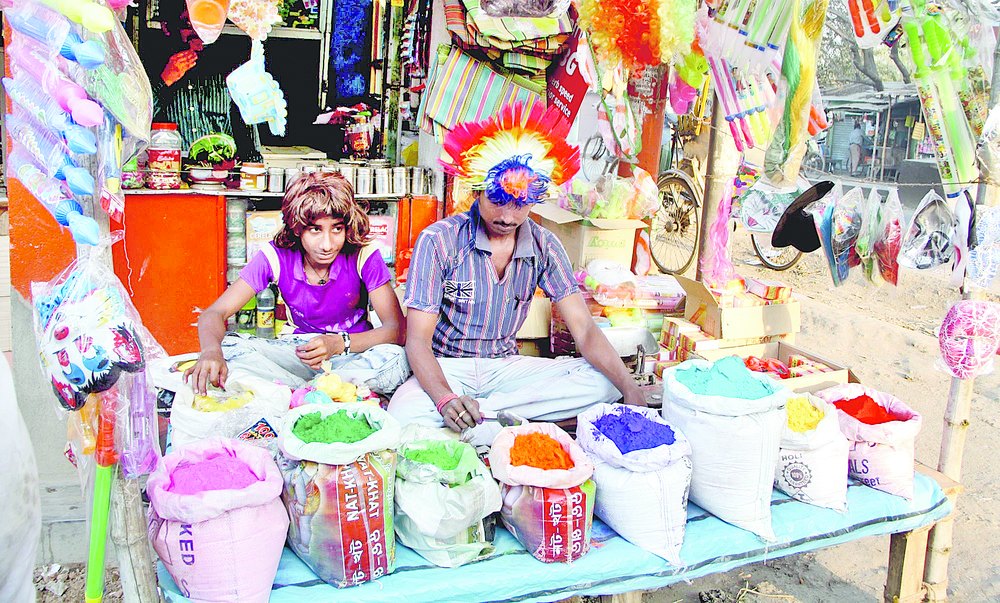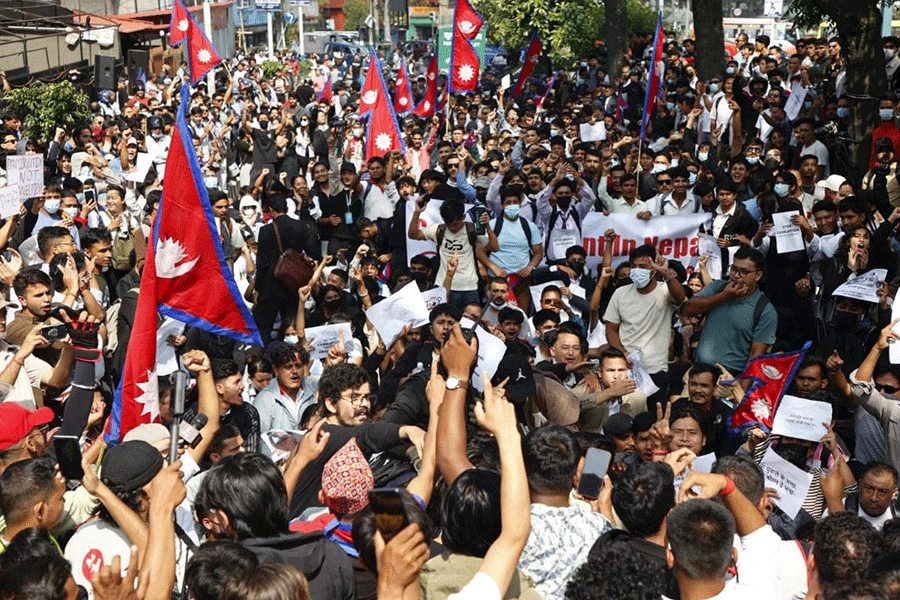 |
| Abir will no longer harm the skin or eyes. A floral variety is set to debut before the festival of colours. A Telegraph picture |
Itching to play Holi but fearful of the itchy skin that the coloured dust leaves in its wake? Take heart. Natural abir, as opposed to the familiar synthetic variety, will hit the market before the festival of colours kicks off this year.
?We are deriving colour extracts from flowers, especially those that are most commonly available. We?re preparing six to seven shades of yellow, red, green, violet, purple and blue from flowers such as aparajita, marigold, hibiscus and dopati,? said Siddhartha Dutta, head of the chemistry department, Jadavpur University.
The department is providing the technical expertise for the project and the products will be marketed by the West Bengal Horticulture Development Corporation. Maromi, a Howrah-based NGO, has been entrusted with procuring the flowers, processing them and packaging the products.
The flowers will be collected from the Mullickghat market as well as from growers in Bagnan, Howrah, which accounts for the bulk of the city?s supply. ?About 40 per cent of the flowers brought to the Mullickghat market remain unsold and are dumped,? said Subrata Basu, deputy manager of the horticulture development corporation.
?People are usually wary of the abir available in the market, fearing that it may contain chemicals that can harm the eyes and the skin. We aim to provide a variety that is made from natural ingredients and is safe even for babies,? said an official.
The new variety will comprise soft stone (talcum) powder. It will be coloured with flower extracts and perfumed with plant extracts.
?The colour-extraction process is akin to boiling. The extracts will be brought into a semi-solid state and then dried,? said Pitabasan Das, vice-president of the NGO.
?Purple and blue will be sourced from the aparajita, while yellow will be derived from the marigold. For violet, we will use extracts from hibiscus, while pale red will be derived from the dopati. A mixture of three flowers will yield a shade of green,? Dutta of Jadavpur University told Metro.
The abir will be sold through the outlets of the horticulture development corporation, as well as by women?s self-help groups. According to officials, the colours will be marginally more expensive than the synthetic ones. But they have already found takers. ?We will send 100 kg of our abir to Santiniketan during Basanta Utsav,? Das said.











